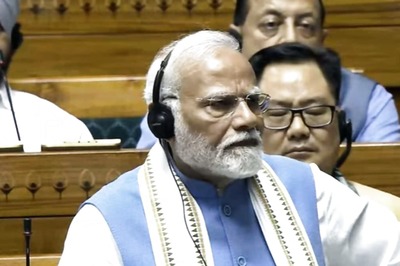
views
Most of us remember a time when we found it difficult to pay for autos, at kirana stores, to the vegetable vendor, or at xerox shops just because we were not carrying enough change. This would not only be cumbersome but in certain cases make the transactions impossible. However, digital payments have changed that, and how.
Financial inclusion aims to ensure that every individual in the country has access to financial services. And the role of digital payments and the industry players has been significant in making financial inclusion a reality.
Digital payments have emerged as a powerful tool for bringing more people into the formal economy in India. With the rise of mobile payment apps, digital wallets, and the introduction of the Unified Payments Interface (UPI), individuals previously excluded from formal financial services can now participate and benefit from the formal economy. In fact, now, one can make UPI payments even if one does not have a smartphone.
Digital Payments Boosting Financial Inclusion
According to a report by PwC titled the Indian Payments Handbook- 2022-2027, the Indian digital payments market has witnessed consistent growth, with a compounded annual growth rate (CAGR) of 50 per cent in terms of transaction volume. The report predicts that this growth trajectory will continue, projecting the number of transactions to surge from 103 billion in FY 2022-23, to a staggering 411 billion in FY 2026-27. Specifically, it is estimated that UPI transactions will experience a substantial rise from 83.71 billion in 2022-23, to 379 billion transactions by 2026-27.
One of the primary ways digital payments are facilitating financial inclusion is by enabling the unbanked population to access financial services. Traditional banking requires physical infrastructure and documentation, making it inaccessible for many individuals, especially those in remote areas.
However, digital payment platforms allow users to create virtual wallets, and conduct transactions using their smartphones, bypassing the need for traditional bank accounts. This empowers the unbanked population to store, send, and receive money digitally, opening up avenues for savings, payments, and financial planning.
Empowering Rural India
Fintech entrepreneurs in India are going beyond digital payments and addressing the financial services gap in rural and semi-urban areas by offering online banking, and financial solutions. Their initiatives include digital payment platforms, providing access to investments, digital payment platforms, digital ledger apps, and services like Aadhaar Enabled Payment Systems (AEPS).
These innovations are making it more convenient for small enterprises, and merchants in underserved areas to access financial services, empowering them to grow their businesses. By bridging the gap between formal financial services and the unbanked population, fintech entrepreneurs are playing a crucial role in promoting financial inclusion and fostering economic empowerment in rural and semi-urban communities.
The adoption of digital payment methods has brought formal banking services within reach of rural areas. Mobile banking apps and digital platforms enable individuals to open bank accounts, transfer funds, and access various financial services conveniently. This accessibility eliminates physical documentation and the need for long travels to physical bank branches, saving time and effort.
Government initiatives such as the Jan Dhan Yojana and Direct Benefit Transfer schemes have further promoted financial inclusion through digital payments. These programs encourage individuals to open bank accounts, and receive subsidies, and welfare benefits directly into their accounts. This not only enhances financial inclusion but also familiarizes rural populations with digital payment processes and formal financial services.
More Banks Going the Fintech Way
India has emerged as a frontrunner in fintech inclusion, surpassing the global average with an adoption rate of 87 per cent, as highlighted in the Economic Survey 2022-23. This significant achievement is attributed to the combined factors of the pandemic accelerating the adoption of digital financial services, and the robust foundation laid by initiatives like the Jan-Dhan, Aadhaar, and Mobile (JAM) trinity, as well as the Unified Payments Interface (UPI) and regulatory frameworks.
These advancements have propelled the growth of solutions offered by banks, non-banking financial companies (NBFCs), insurers, and fintech firms, contributing to the overall financial inclusion landscape in India.
Kotak Mahindra Bank’s Kotak-811 is an example of how banks are utilising fintech to promote financial inclusion in India. Digital bank accounts are no minimum balance accounts with zero contact and video-KYC benefits, which can be accessed anytime, from anywhere.
In August 2022, the Reserve Bank of India (RBI) published the Financial Inclusion Index (FI Index) for FY22, revealing a value of 56.4 compared to 53.9 in FY21. The FI Index assesses the level of access people have to banking and financial services in India based on usage, ease of access, and quality of facilities. The increase in the FI Index is encouraging and also signifies that digital payments are the way to go.
(The author is co-founder and managing director of In-Solutions Global Ltd)




















Comments
0 comment